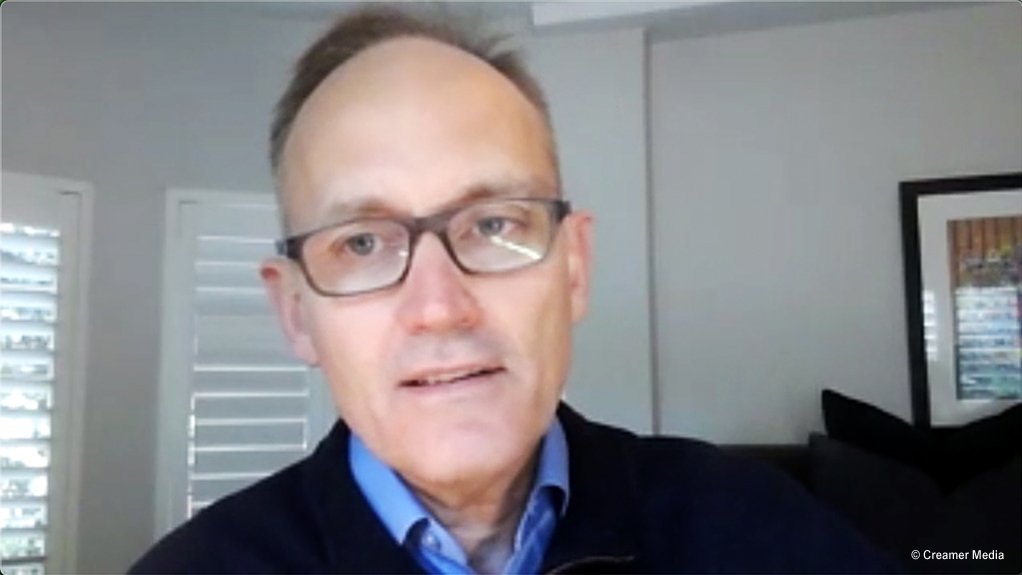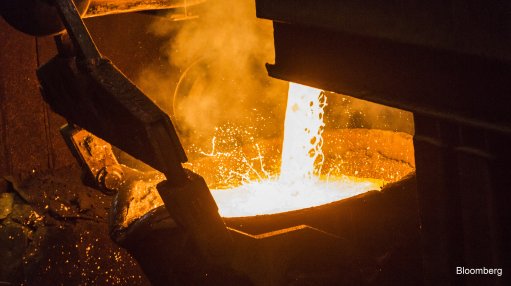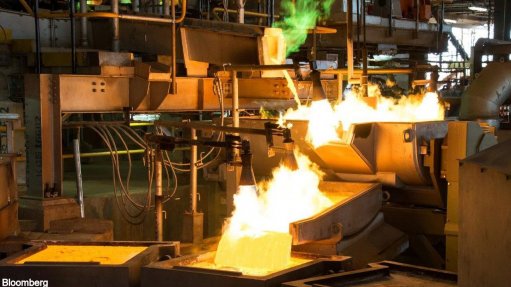Consultancy unpacks why primary capital is unattainable for junior miners
South Africa’s public markets are no longer fit for purpose in a resource-rich economy, said AmaranthCX director Paul Miller, unpacking the state of public markets in South Africa at the Junior Indaba, held on June 1 and 2.
“South Africa has a hidden superpower. It has 85% of all pension fund savings in Africa and the nineteenth largest public equity market globally – while only ranking thirty-second in terms of economy size.
“We punch way above our weight in terms of the depth of our public market relative to the size of our economy.”
Public market capitalisation in South Africa is about four times the size of gross domestic product. Miller added that the market is well regulated and developed, with fully developed mining and exploration listing regulations to boot.
Upwards of 40% of assets in the public market are held by foreigners, attracted to the local market.
However, Miller questioned why it is not working, since the market is losing listings year after year, with very few true initial public offerings being made and no junior mining and exploration companies able to raise money locally.
“In 1980, the JSE held about half of the world’s mining capitalisation. Today, there are only 40 mining companies listed on the stock exchange, with only 12 being small cap stocks,” he pointed out, citing data by fund manager, mining engineer and analyst Peter Major.
“Why do we have this dichotomy between the market that punches way above its weight in a resource-rich economy that can barely attract junior mining investment?”
The net number of listings on the JSE have steadily been decreasing from 665 in the 1990s to about 300 currently, which Miller attributed partly to the removal of passive holding companies; however, there remains the phenomenon where 20 to 30 de-listings are occurring, on average, every year – exceeding the number of new listings.
About 97%, or R19-trillion, of all gross market capitalisation on the JSE is in companies in the top 100, while the remaining 3% of market capitalisation, or R520-billion, is in the 200 companies outside of that.
Miller explained that the JSE has a massive concentration of market capitalisation in the upper third of the market.
“The actual trade is all happening within the top 100 companies, in fact, mostly in the top 40 companies. If that is who is selling shares on the stock exchange, who is buying shares on the stock exchange?”
By Miller’s calculations, about 90% of all long-term savings assets are managed by just 11 institutions, including long-term insurance assets. South African institutional funds are also undoubtedly highly concentrated.
“Both sides of the equation are thus highly concentrated – the market capitalisation of companies and the assets under management by institutions. This results in the local public markets favouring size above all else.”
This supposedly leaves retail investors to pick up the slack for the 200 companies outside the top 100.
“However our stockbrokers have mostly morphed into wealth managers, have tried really hard to put all their clients into institutional funds too. Therefore, most retail investors have been moved into model portfolios that mimic the funds managed by the top 11 institutions, again investing overwhelmingly only in the top 100 companies. This while online stockbrokers, the last redoubt of direct retail investors, tend to only support secondary trade, not primary capital raising,” Miller explained.
He argued that the market is so concentrated because of the benefits posed by tax incentives for savers that, in fact, disproportionally benefit large institutions. “In order to access the deferred tax benefit on pension funds, SA savers are forced to invest via institutions and have no self-managed options, as opposed to other jurisdictions like Canada, the US, the UK and Australia, for example.
“Our rent-seeking dominant institutions make sure that tax incentives are only available to you if you invest through them and pay them fees for the privilege. There is also unfair discrimination in favour of collective investment schemes, or unit trusts, and the way they are taxed, versus how private portfolios are taxed,” Miller noted. Again discouraging direct retail investment by design.
He lamented the “greatest obscenity of all” as being government introducing tax-free savings accounts exclusively for investments made through institutions. Savers are forbidden from holding a direct stock portfolio within a tax-free savings account. In his view, policymakers have been captured by the institutions as it is clear that the tax incentives effectively benefit them, not the health and diversity of the market generally and ignore the capital requirements of new and growing businesses.
“The institutional bias in favour of large and liquid instruments has been compounded by a massive increase in indexation, or index tracking and benchmarking, which reinforces the bias.”
Effectively, Miller stated, South Africa no longer has a public market, rather an institutional market.
“We have also seen the slow death of primary capital raising. There have been 184 new listings on SA markets in the last ten years – of which less than half raised money at listing. Of the 90 companies that raised money, 69 did it via private placings, which by definition excludes the public, and of the remaining 21, 17 undertook restricted general public offers, with only 4 raising capital via general public offers, with the last having been way back in 2012.
“We no longer include the public in our public market and it is our financial services sector’s fault. The investment banks, and the advisers to companies, deliberately structure new offerings to exclude individuals and, consequently, the overall health of the market has suffered,” Miller bemoaned.
The last true and proper initial public offering might well have been Telkom in 2006, he added.
Miller concluded that South African public markets are no longer a source of investor interest or primary capital for companies outside the top 100 – those with a lower-than-R11-billion market capitalisation.
This while a resource-rich economy requires a public market that can provide primary capital to necessarily small mineral exploration companies and new mine developers.
The South African public market owes its existence to the mining industry; however, it no longer supports the development of industry that gave it birth, Miller asserted.
Miller is confident that there will not be a policy response from financial policy makers in this regard and maintained that the solution, if there is one, probably lies in some sort of disruptive financial technology innovation to reconnect individual investors with smaller companies on the JSE.
Comments
Press Office
Announcements
What's On
Subscribe to improve your user experience...
Option 1 (equivalent of R125 a month):
Receive a weekly copy of Creamer Media's Engineering News & Mining Weekly magazine
(print copy for those in South Africa and e-magazine for those outside of South Africa)
Receive daily email newsletters
Access to full search results
Access archive of magazine back copies
Access to Projects in Progress
Access to ONE Research Report of your choice in PDF format
Option 2 (equivalent of R375 a month):
All benefits from Option 1
PLUS
Access to Creamer Media's Research Channel Africa for ALL Research Reports, in PDF format, on various industrial and mining sectors
including Electricity; Water; Energy Transition; Hydrogen; Roads, Rail and Ports; Coal; Gold; Platinum; Battery Metals; etc.
Already a subscriber?
Forgotten your password?
Receive weekly copy of Creamer Media's Engineering News & Mining Weekly magazine (print copy for those in South Africa and e-magazine for those outside of South Africa)
➕
Recieve daily email newsletters
➕
Access to full search results
➕
Access archive of magazine back copies
➕
Access to Projects in Progress
➕
Access to ONE Research Report of your choice in PDF format
RESEARCH CHANNEL AFRICA
R4500 (equivalent of R375 a month)
SUBSCRIBEAll benefits from Option 1
➕
Access to Creamer Media's Research Channel Africa for ALL Research Reports on various industrial and mining sectors, in PDF format, including on:
Electricity
➕
Water
➕
Energy Transition
➕
Hydrogen
➕
Roads, Rail and Ports
➕
Coal
➕
Gold
➕
Platinum
➕
Battery Metals
➕
etc.
Receive all benefits from Option 1 or Option 2 delivered to numerous people at your company
➕
Multiple User names and Passwords for simultaneous log-ins
➕
Intranet integration access to all in your organisation





















